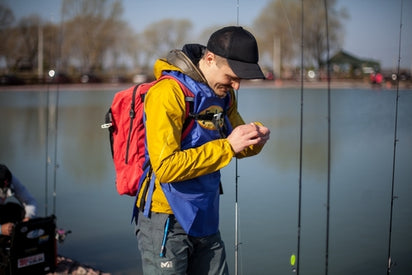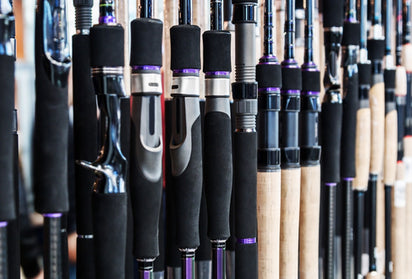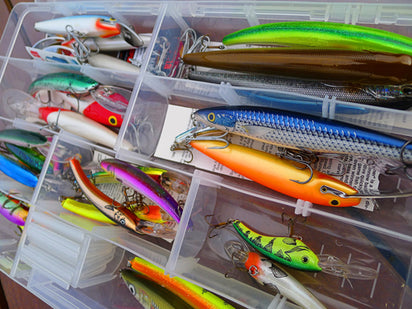Types of Fishing Reels: The Complete Guide
If you’re new to angling, the various types of fishing reels on offer can be confusing. But don’t be surprised – choosing the right reel is a dilemma as old as the hills. As any angler will tell you, knowing the pros and cons of each type of reel can make or break your day on the water. Thankfully, things are a lot easier than they might seem, and today, you’re going to learn how to choose your own.
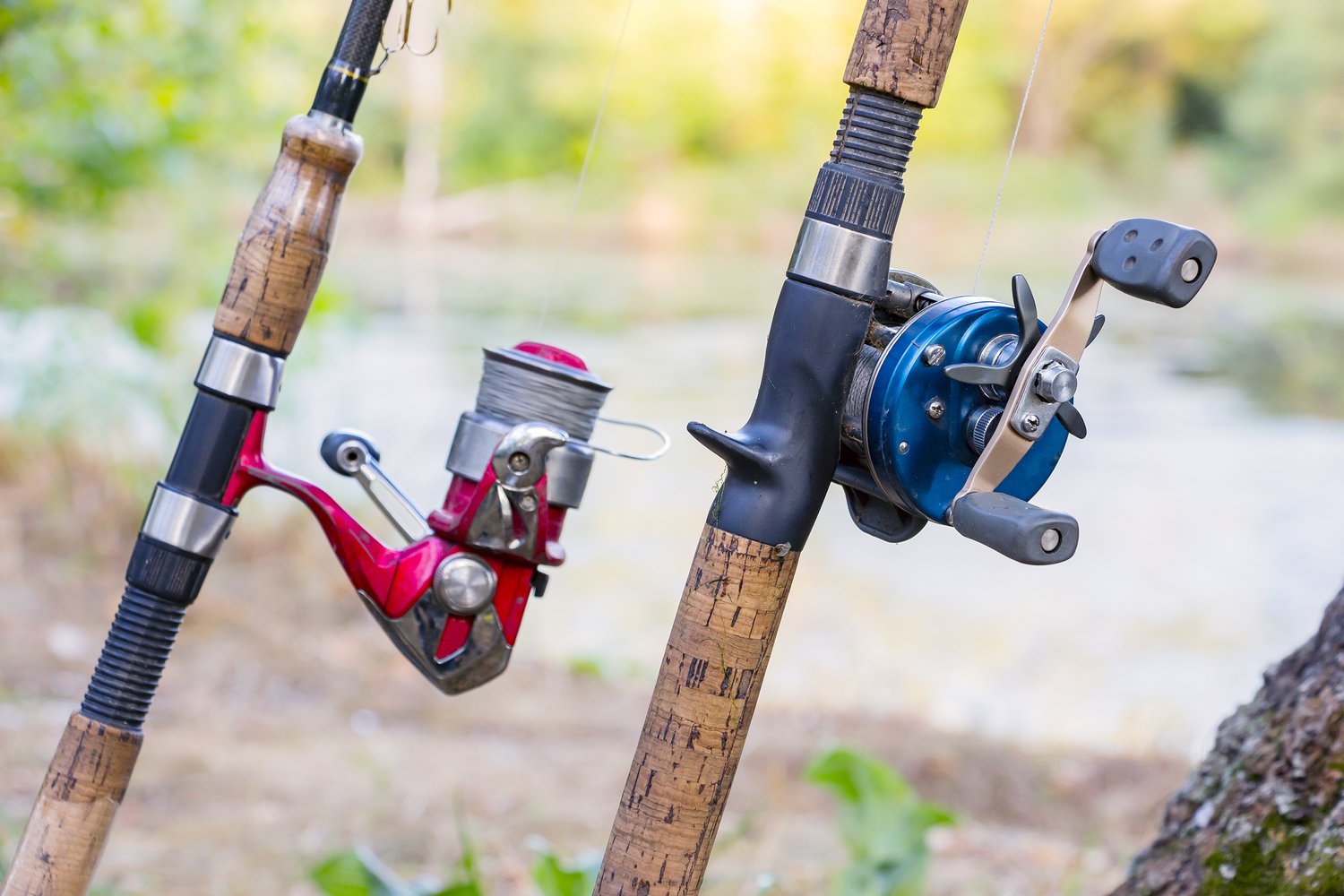
A few questions come into play when choosing the right fishing reel. Number one, what style of fishing is it best suited for? Two, how easy is it to operate? How long will it last? And what’s the price?
As we cover the most important types of fishing reels, we’ll cover all of these questions and more. By the time you’re finished reading, you’ll know exactly what you need to bring ‘em in!
Spincast Reel
The spincast is by far the simplest modern fishing reel out there. With it’s basic design, this guy is ideal for beginners or anglers on a budget. You don’t see them a lot these days, but a few decades ago, spincast reels used to be all the rage.

Features and Design
Spincasters feature a metal nose cone, which hides all the important components of the reel. On the back, there’s a button which serves to toggle the line between free-spool and locked.
Last but not least, spincast reels have a drag adjustment mechanism. This mechanism essentially allows you to adjust how much resistance a fish feels when pulling on your line. On a spincast, the “drag” is usually on the side of the reel, or next to the reel handle.
Casting
Casting with a spincast reel couldn’t be simpler. All you need to do is press the spool control button, take your swing, and release. Once you release the button, the line will fly out to where your rod tip is pointing. When you’re ready to stop the line, just press the button one more time. Easy-peasy.
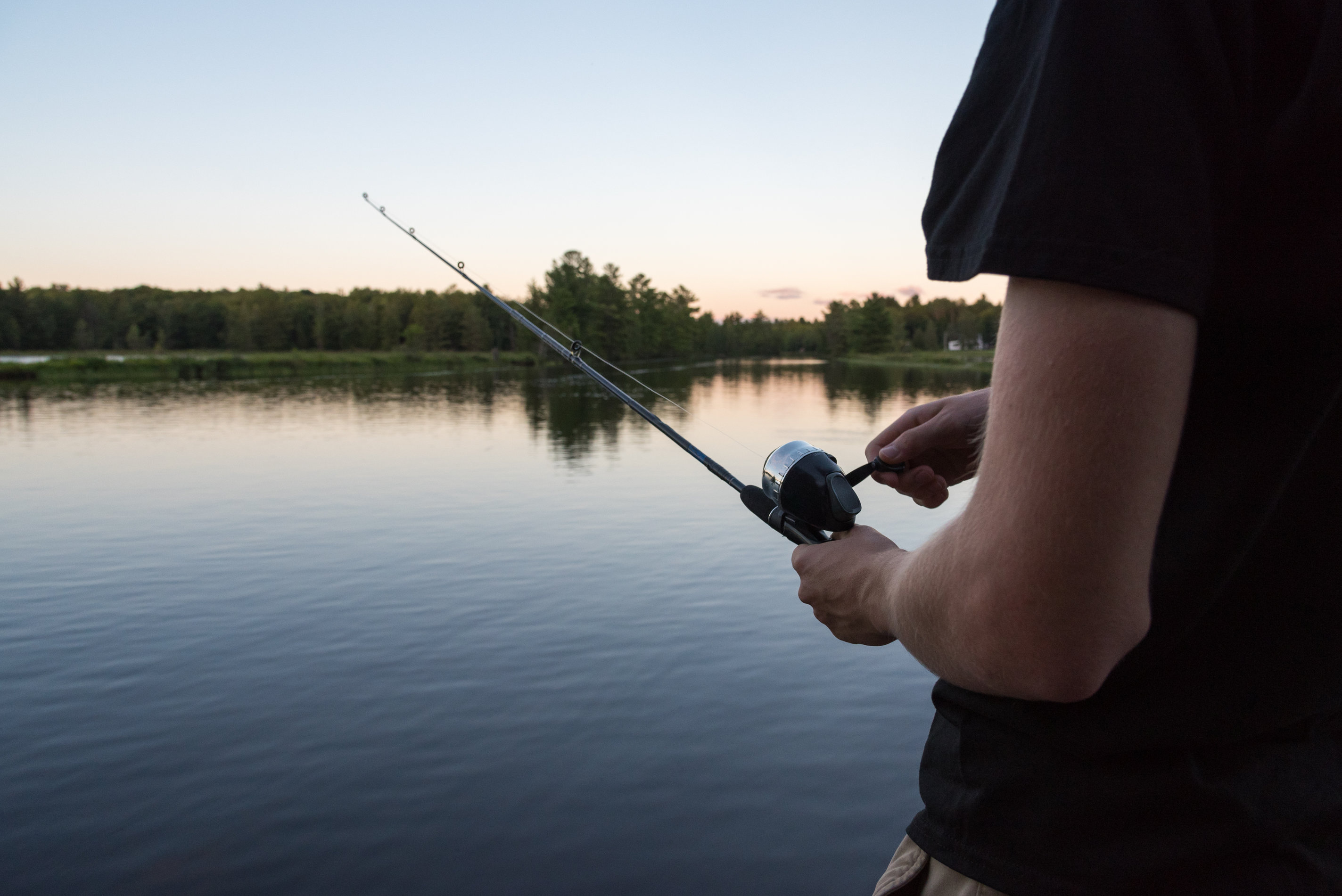
Pros & Cons
Two main advantages to using a spincast reel is that they’re dead simple to operate and that they rarely cause line tangles. On top of that, they’re the cheapest type of fishing reel out there. You can pick up a spincast reel for as little as $20 nowadays.
Spincasters have something of an “x-factor”, too. These reels are probably what your average middle-aged angler used to start their fishing career on, so you can bet it holds a dear spot in their hearts!
Spincast reels might be cheap and simple to operate, but they do come with a few downsides.
Number one, their closed-face design tends to keep water and debris inside the reel, which can damage it over time. Number two, most spincasters aren’t that well-made, and will rarely last you longer than a single season. Three, and probably most important, spincasters have limited casting range, and aren’t as precise as other reel types.
Spinning Reel
The spinning reel is arguably the most popular type of fishing reel in existence. It’s a tad more complicated to use than the spincast, but a lot more efficient and durable. Beginners have no trouble using it, and there’s a whole army of experienced anglers that won’t fish without it.
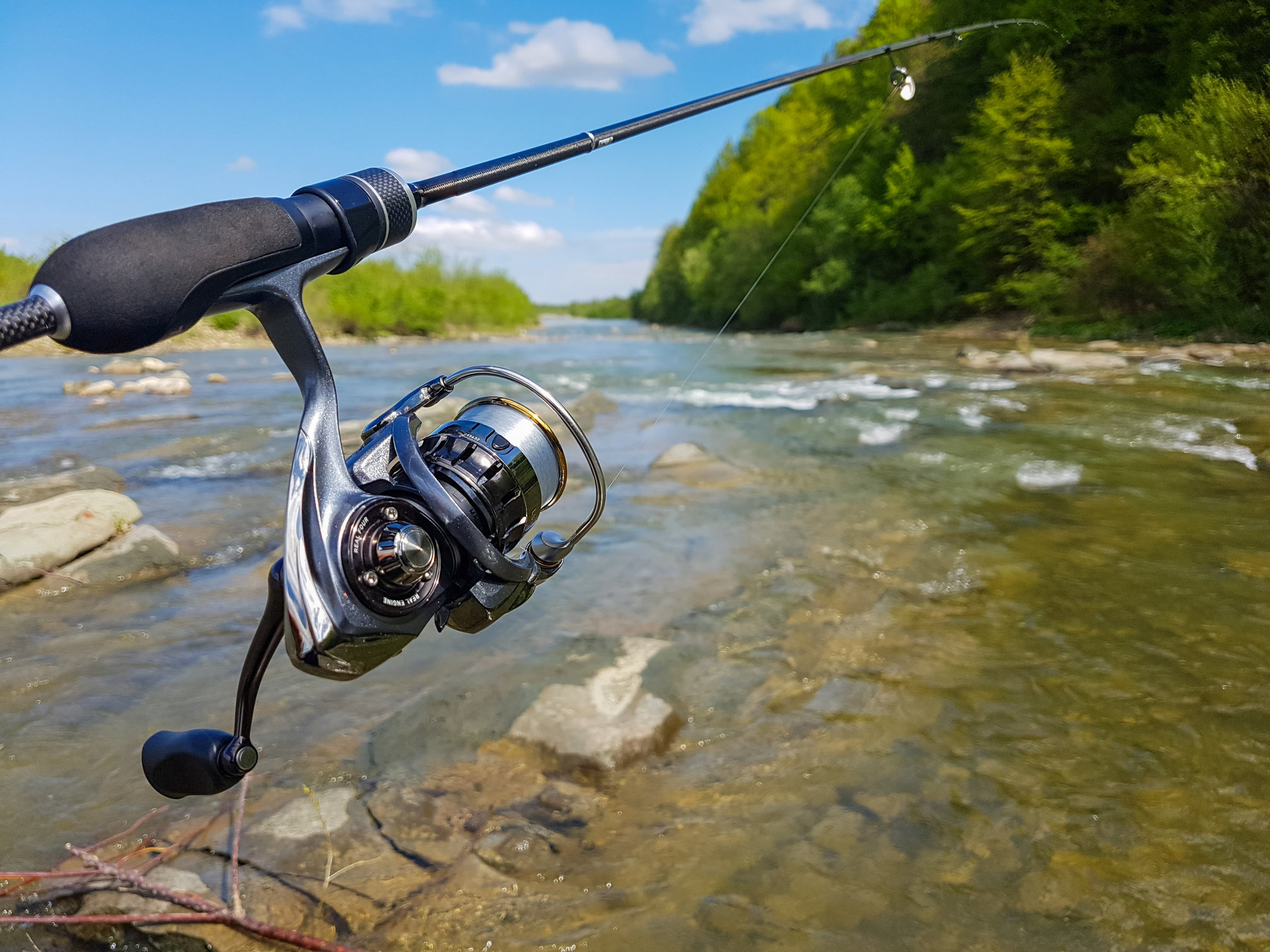
Features and Design
Unlike the spincast reel, the spinning reel boasts an open-face design, with the drag adjustment on top. It comes with a metal bail, whose purpose is to lock the line and prevent it from unspooling. The bail is also important because it guides the line back evenly onto the spool. But more on that in a second.
Spinning reels are unique in that they attach to the rod from below. This not only provides a natural holding position, it also gives you a nice balance when casting. Speaking of, casting with a spinning reel is super easy!
Casting
To cast with a spinning reel, you just disengage the bail, and squeeze the line against the rod with your index finger to prevent it from unspooling. Next, swing your rod from the side or overhead. As you do, release your index finger around halfway through the motion. Aim the tip of the rod where you want the bait to land, and voila!
One thing a lot of people get wrong with the spinning reel is reengaging the bail after the cast. Most spinning reels close the bail automatically after you start reeling. Thing is, that first spin can often cause the line to miss the spool, resulting in a tangle. When you throw the line out, always make sure to put the bail back in its starting position by hand.
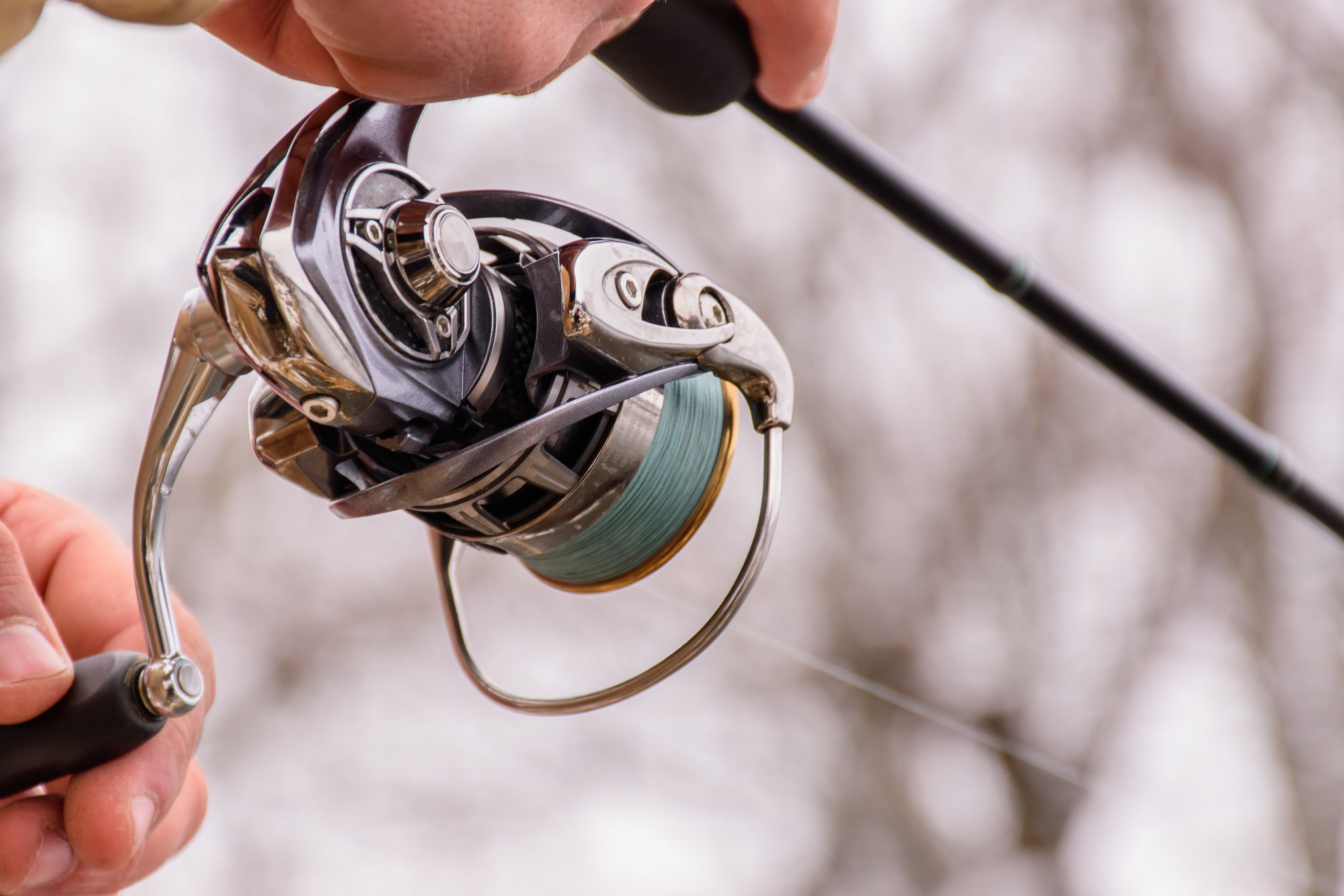
Pros & Cons
Spinning reels are an immensely capable piece of fishing equipment. They work equally well with lures and smaller baits, and are a good choice for a number of species and habitats. Combined with thin, powerful braided lines, they can produce some serious pulling power, too.
Once you get the hang of them, spinning reels will allow you to achieve impressive casting distances. With prices ranging from $50 to $150 for a quality model, they are the golden middle for most anglers.
Spinners may be a great all-around option, but they’re not all sunshine and rainbows. If you’re not careful with handling the bail, you can easily get nasty line twists and tangles. The other drawback is that you’re limited to lighter gear. And once you start loading spinners with heavier lures and lines, their performance starts to drop pretty noticeably.
Baitcasting Reel
The baitcaster is arguably the most advanced type of fishing reel. Often used by experienced anglers and fishing pros, this reel is unmatched in both power and precision.
Baitcasting reels have a lot more moving parts than the spincast or the spinning reel. As a result, they come with a learning curve, but mastering them ultimately takes your fishing game to the next level.

Features and Design
The first thing you’ll notice on a baitcaster is that it sits on top of the rod handle. It features a semi-enclosed design, and a much sturdier build. On top of the drag mechanism, which sits next to the reel handle, the baitcaster has two additional components that allow for extra performance and customization.
These are the spool tension knob, and the braking system. In essence, both mechanisms are used to adjust how fast the line is going out of the reel.
Why is this important? Well, first, you get to throw the line exactly as far as you need to. Second, you can prevent the spool from turning faster than the line is going out. If this does happen, you get what’s called a bird’s nest. And yes, that looks exactly like it sounds.
Casting
Baitcasting reels don’t have a bail, so to stop the line from spooling, you actually press your thumb against the spool. You can do this as the line is in mid-flight if you need to, and that allows for more precise casts. Once the bait hits the spot, you just press a clip to lock the line, and you’re good to go.

Nerd fact: Baitcaster rod guides are a lot smaller than the ones on a spinning setup. This is because baitcasting reels release the line in a straight path. On a spinning reel, the line goes out in a circular motion, and that requires more space.
Pros & Cons
Baitcasting reels are the most powerful fishing reels, hands down. They can handle heavy lines and produce a lot of pulling power, making them a great option when you’re chasing larger fish. Baitcasters also allow you to feel the line as it’s going out, so you can stop it exactly when you need to.
Last but not least, baitcasters are highly customizable. Whether you’re pulling out bottomfish from heavy cover, or doing dropshots for Bass, this reel can do it all.
One tricky thing about using the baitcaster is that different weights of lures demand different settings for the spool tension and braking system. That means that you have to adjust the settings every time you change your lure. They take a little time to get used to, so they’re not the best option if you’re just starting out.
Another drawback is the price. Ranging anywhere from $100 to $500 for a quality setup, baitcasters are the most expensive fishing reels you’ll find. They make up for it in performance, though – you just need to know if they’re the right choice for you.
Which fishing reel is right for you?
The three types of fishing reels we covered might serve a similar purpose, but as you just saw, they are very different. In case you’re still unsure which of these is the best choice for you, we’ve digested all this info into one simple infographic.

Reel ‘Em In!
Fishing reels come in a variety of shapes and sizes. Each of the three reel types we explored offers its own set of models and designs, leaving you almost spoiled for choice. One reel won’t catch you all the fish in the sea, however.
Depending on the type of angler you are, what kind of fishing you’re into, and your budget, choosing the right type of fishing reel is up to you. Hopefully, this guide has made the decision a little easier.





